DEB SLOUGH serves as backbone of BSU athletics
4

PROTEIN PACKED MEALS
COMFORT TO THOSE WHO NEED IT MOST

DEB SLOUGH serves as backbone of BSU athletics
4

PROTEIN PACKED MEALS
COMFORT TO THOSE WHO NEED IT MOST







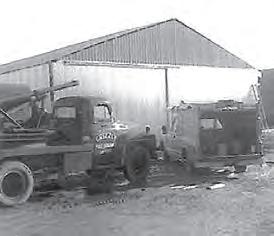



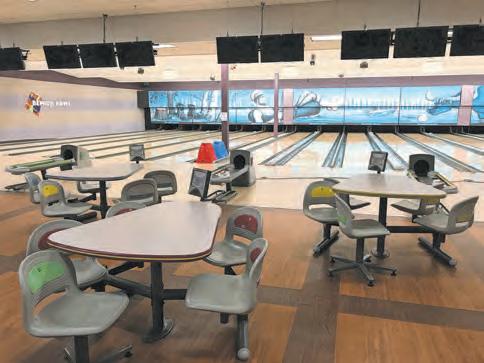
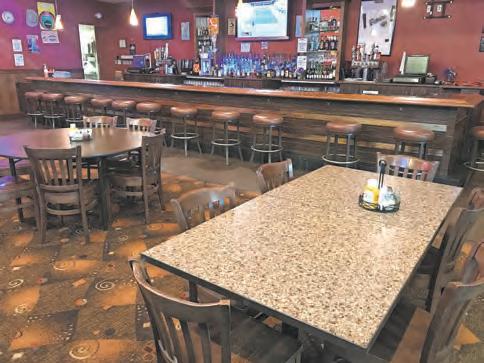


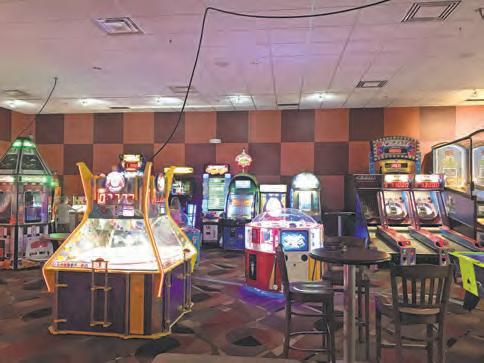

802 Paul Bunyan Dr. SE, Suite 19 Bemidji, MN 56601 218-333-9200
STAFF
Editor
Daltyn Lofstrom
Creative Director
Mollie Burlingame Advertising
Lindsay Nygren Business
Larisa Severson
ADMINISTRATION
Advertising Director
Todd Keute
Editor
Annalise Braught
Controller
Tammie Brooks
TO ADVERTISE 218-333-9200
James Hanson jhanson@bemidjipioneer.com
Questions and Feedback
Email inBemidji at inmagazine@bemidjipioneer.com
Volume 11, Issue 2
Copyright © 2024 Bemidji Pioneer in Bemidji
All rights reserved. Although some parts of this publication may be reproduced and reprinted, we require that prior permission be obtained.
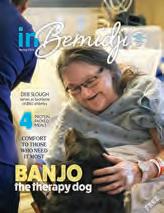
ON THE COVER
Banjo the therapy dog and his handler, Rick, make weekly visits to Sanford Bemidji to lift the spirits of patients and Sanford staff alike.
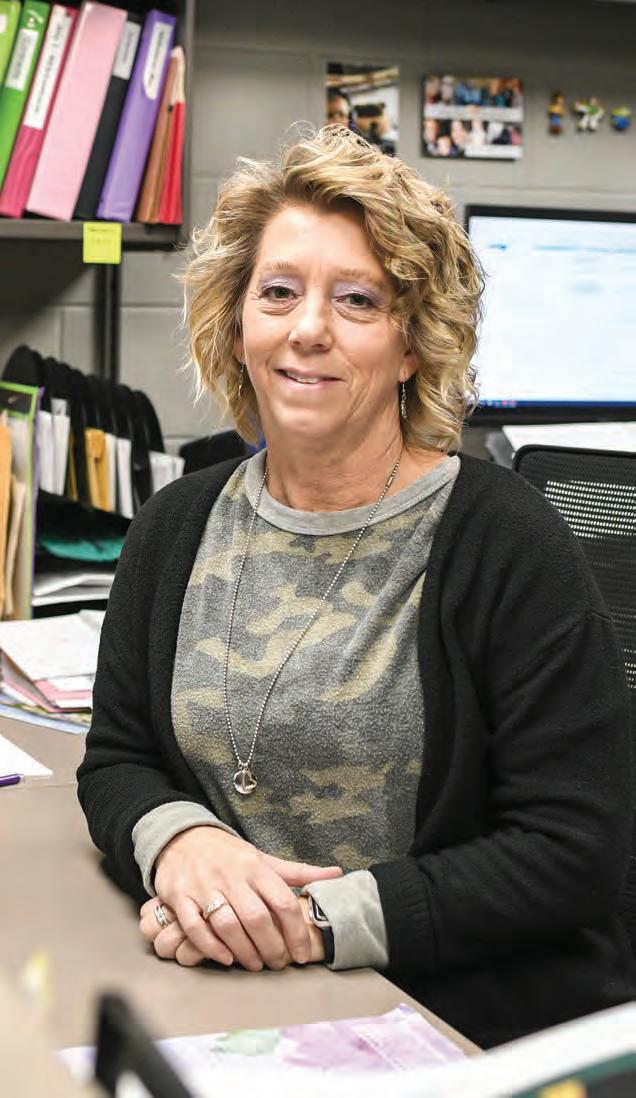
inBemidji’s mission is to be Bemidji’s and the surrounding area’s local lifestyle magazine. We strive to enhance the quality of life for the people of the Bemidji area by informing them about all of the amazing people who live in our community. Our concentration is on everything local: fashion, food, health, and most importantly, unique individuals and stories.
We strive to maintain a high level of integrity as an inspiring, local media presence for our readers and provide advertisers with a high-quality, effective marketing medium. Read the award-winning inBemidji online! Visit bemidjipioneer.com , then click on inBemidji near the bottom of the page.

10
15
17
27
Deb Slough
Bemidji State’s first athletic administrative assistant has served as a Jill-of-all-trades the past 22 years.
Learn more about life coaching from a life coach as she helps you decide if the service is right for you.
Banjo the Therapy Dog
The beloved canine and his handler, Rick, provide needed comfort to those who need it most.
Tricia Andrews proves that everyone you meet has a story as she’s interviewed for Bemidji’s person-on-the-street series.
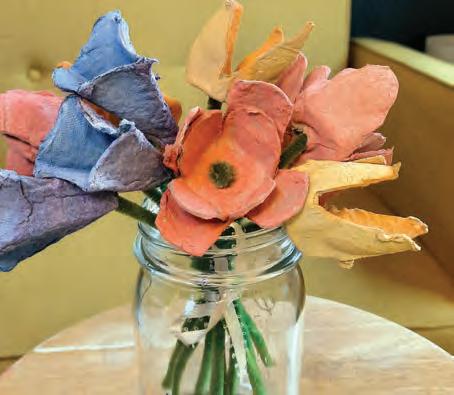

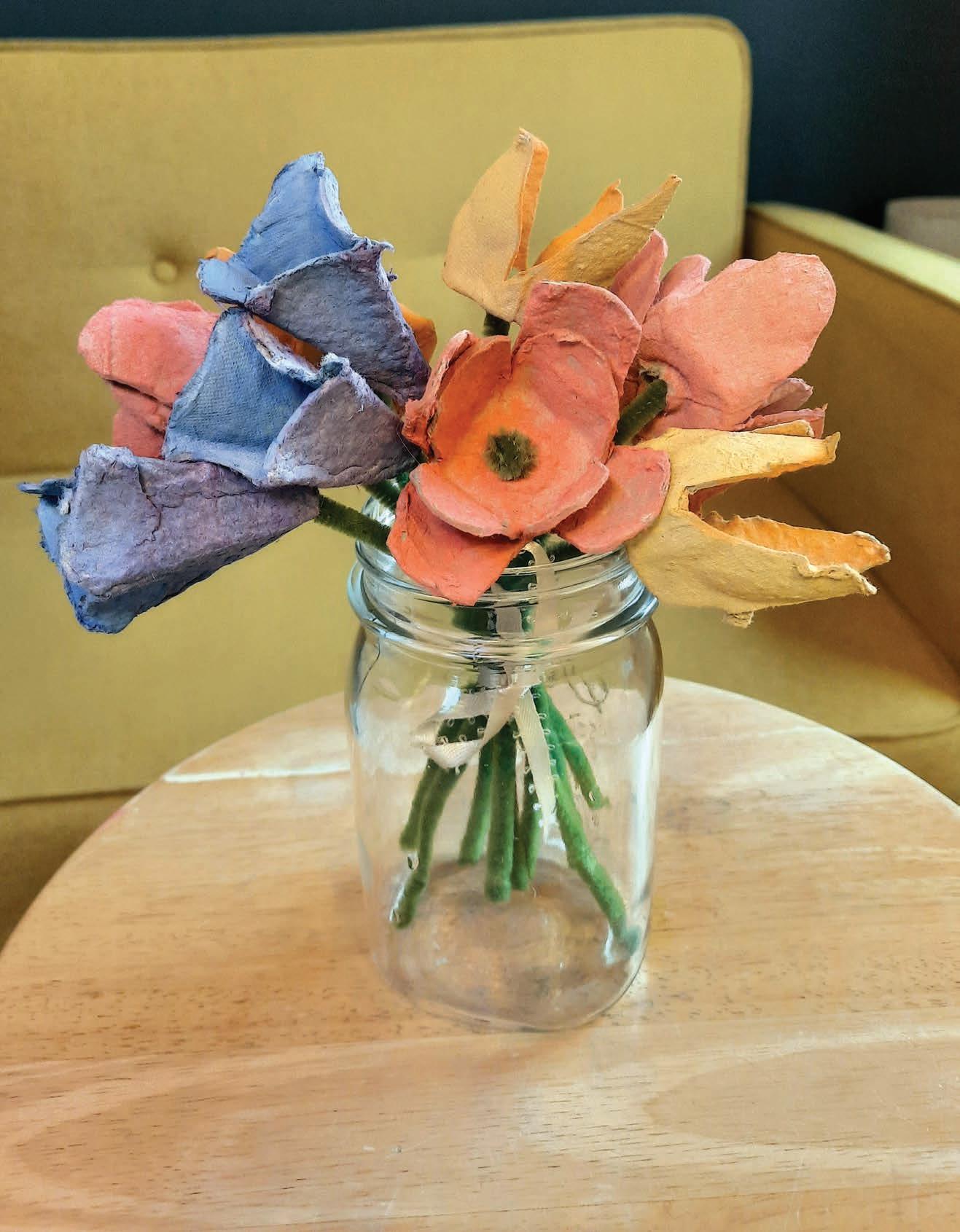
If you’re planning on dyeing eggs this Easter, make sure to save the egg cartons for these cute DIY flowers. This beautiful bouquet of bluebells, poppies and tulips is sure to brighten up your home in anticipation of real blooms in the garden. Feel free to reuse a glass jar to display your crafty creation!

• Egg carton(s)
• Watercolor paints
• Paintbrush
• Pipe cleaners (green)
• Hot glue gun
• Sharp scissors
• Glass jar or vase (optional)




Delicious drinks, tasty treats, and a great atmosphere!
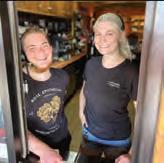

Step One:
Using the scissors, cut the egg carton into flower shapes
• For bluebells, cut off the cone-shaped dividers that hold the eggs in place.
• For tulips, use one egg carton cup and cut the sides into four pointed petals.
• For poppies, use two egg carton cups. Cut the sides of one cup into four large round petals. Cut the sides of the second cup into four
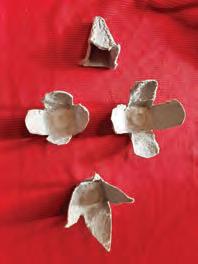

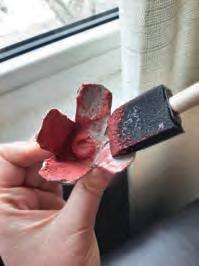


1 2 3 4 5 Open 7 days a week 6 am - 10 pm
Step Two:
Paint each flower using watercolors and let dry.
Step Three:
Carefully poke a small hole through the bottom of each flower with the scissors.


Step Four:
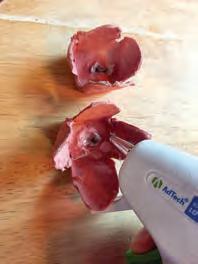
Using hot glue, glue a pair of rose petal cups together, making sure not to cover the hole in the bottom. Use caution when handling the hot glue gun. Children should be supervised during this step.
Poke a pipe cleaner through the hole in each flower. Once through, bend the pipe cleaner in a circle to secure the stems.


With a winter as unconventional as the last, the seamless switch to spring presents an opportunity for children to read all about nature while in the midst of warming weather. Check out these books picked out by Four Pines Bookstore of Bemidji focused on the flora and fauna of spring.


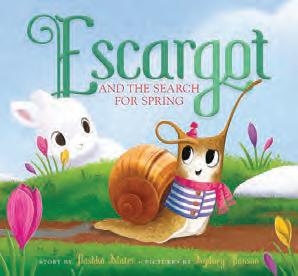



Happy reading!
Escargot and the Search for Spring
Grumpy Monkey Spring Fever
Bluey: Easter Fun
The Easter Egg is Missing
Autumn Peltier, Water Warrior


Deb Slough boarded a plane to Washington, D.C., in April 2009 with the Bemidji State men’s hockey team.
The Beavers were dancing to the Frozen Four, the deepest NCAA Tournament run in school history. They upset No. 1 seed Notre Dame before knocking off No. 3 Cornell to win the Midwest Regional in Grand Rapids, Mich.
As they headed to the biggest event in college for the first time, the Beavers were in uncharted territory.
“We had no idea what we were doing,” Deb recalled. “We were flying
by the seat of our pants. We flew there, and I remember doing a lot of the ticketing stuff. I’m sitting with people from Boston; Miami, (Ohio); Vermont – these big schools. And here I am from little Bemidji.”
Deb was in year seven as BSU’s athletic administrative assistant, a position she’s held since its inception in 2002.
In the early days of her gig, Deb learned on the fly. But when Bemidji State was placed on a national Division I platform, she showed just how valuable she is to “little
Bemidji,” even for something as simple as getting the Beaver faithful their tickets.
“You know everybody here,” she said. “It’s parents and people you know and recognize. I was just giving tickets away to all of the people that we needed to give tickets to because I knew them. Someone from another school leaned over to me and said, ‘You don’t have a sign-in sheet for those? That’s a compliance thing.’”
Deb packed up her things and darted to her hotel room. She took out her computer and got to work.
“I remember putting together this makeshift form for people to fill out to get their tickets,” she continued. “We were such a fish out of water. We didn’t have a clue what we were doing. We were making stuff up as we went along, but it kind of worked. Meanwhile, these bigger schools were just looking at us thinking, ‘What in the world are they doing?’”
If given enough time, Deb could recount hundreds of those moments. She’s used each of them to grow into the most integral member of Bemidji State’s Department of Athletics.
Deb didn’t graduate from BSU with the intention of becoming the school’s first athletic administrative assistant.
“I got a bookkeeping degree,” she explained. “I went to BSU and the technical college here in Bemidji. I got married, moved to Watertown, (South Dakota), had a family and then moved back to Bemidji. I’m divorced now, but my ex-husband and I always vacationed up here. We’d cabin up here, visit family up here. We moved back here because we were always here. I always wanted to come back.”
In 2001, she took a job at Sanford Health before handing in her resignation papers two weeks later. A position in Bemidji State’s Hagg Sauer building opened up, which brought her back on campus.
Almost immediately, Deb found herself on the pavement of the John S. Glas Fieldhouse in an unconventional fashion, as Bemidji State faculty went on strike shortly after she started her new position.
“What the hell did I just get myself into?” she recalled. “I’m sitting outside the John Glas with a picket sign two weeks after getting a job at BSU. I hadn’t even worked here long enough to get a paycheck.”

“I remember putting together this makeshift form for people to fill out to get their tickets. We were such a fish out of water.”
- Deb Slough
Once the strike ended, she returned to her post at Hagg Sauer. However, that too was short-lived. Bemidji State was in the process of starting a separate department specifically for athletics.
Deb has been around sports her whole life. A native of Fosston, she’d ride in the car with her dad to Bemidji State hockey games when she was young. When BSU opened the athletic administrative assistant position, she threw her hat in the ring.
“I just thought it sounded fun,” Deb said. “My family, my kids, we’re seasonticket holders for hockey. My kids like sports, my grandkids are big into hockey. They love all of it. My whole family bleeds green.”
Only three other Bemidji State athletics faculty have been around as long as Deb: men’s hockey head coach Tom Serratore, women’s soccer head

coach Jim Stone and football head coach Brent Bolte. The rest have come and gone in her 22 years inside the athletics office.
Those tenured head coaches are three of the most impactful BSU athletic figures ever, and so is Deb. Without her, Bemidji State sports might look different.
“Whether you want to call it coaching traits, a quarterback, a point guard – whatever analogy you want to make – it’s her,” said Britt Lauritsen, Bemidji State’s director of athletics. “Air traffic controller also works. She directs so much behind the scenes. It’s obvious that she’s spent most of her life in athletics. … She’s a competitor. We’re all competitive around here, and people don’t know how competitive she is. She wants to do her job well and be the best at it.”




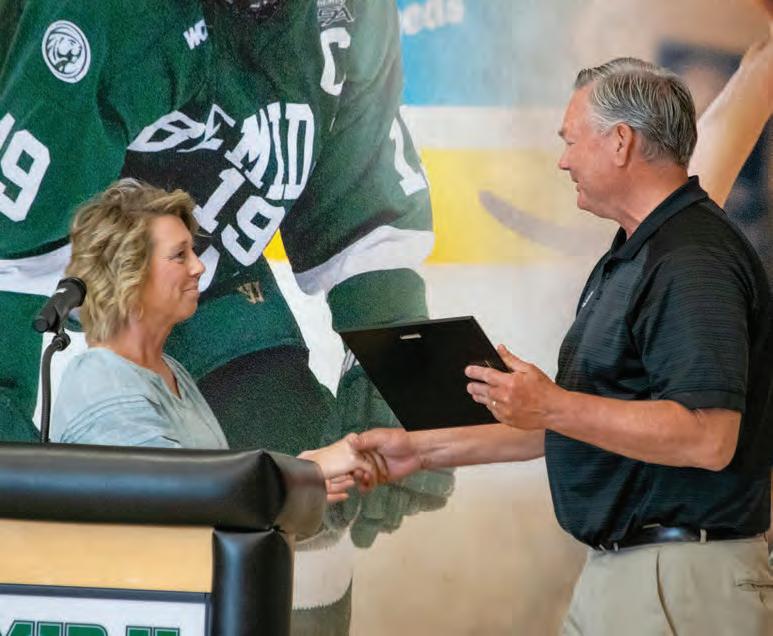
Deb’s job description is more than what she bargained for. In fact, she couldn’t even tell you what it is at this point. She’s just Deb, a doer of all things that come across her desk.
“People always ask me, ‘What do you do?’” Deb said. “I just show up every day and do the day as it comes. I have certain things that are routine like the paperwork, the financial stuff, purchase orders; there’s just so much that I do that’s not in my job description, so just show up every day and do whatever the day brings me.”
Her simplistic answer to her job description doesn’t do her the correct amount of justice.
“I always joke about how I’m the mom of Bemidji State sports,” Deb added. “If somebody can’t figure something out, they come to me. A lot of it is problem-solving. Paperwork, invoices – all of it comes through me. I get them to the appropriate people. A lot of it is putting out fires. There’s no set thing I do every single day.”



“She undersells herself. She has so much institutional knowledge about BSU and how we operate. I don’t think any of us combined could come close to her collective amount of knowledge. ” - Britt Lauritsen
Deb’s colleagues speak higher of her than she ever will.
“If she got up and left right now, just from a logistical point of view, we would be stuck in the mud,” Britt said. “She undersells herself. She has so much institutional knowledge about BSU and how we operate. I don’t think any of us combined could come close to her collective amount of knowledge. That’s just the logistical side of it. Emotionally, we would be devastated.”
Deb’s desk is the first thing people see when they waltz into the athletics department. She answers dozens of phone calls and over 100 emails daily, all while balancing the spontaneous problems that arise.
During the rare times she can escape for a vacation, she keeps her phone within reach, refusing to send people to voicemail. She also serves as the emergency daycare for her grandchildren in the area.
“My mom gets on me about it,” Deb quipped. “She keeps telling me that even when I’m on vacation, I’m never on vacation. I have a cell phone, and it rings constantly. I get calls and texts early in the morning and late at night. But I love it. I’ve had the opportunity to move across campus to different departments. I don’t want that. I like this world.”
Britt commended Deb’s refusal to take “no” for an answer. It’s also how she responds to people when they ask for her help.
“A lot of people would just say, ‘no,’” Deb said. ‘That’s just
not me. I’d rather take care of people and do stuff for other people rather than myself. Athletics doesn’t stop. For me to respond to somebody by saying, ‘I’m not on the clock right now,’ isn’t realistic for me. It’s not who I am. I wouldn’t ever do that.”
With a nervous chill in her spine, Britt walked into the Bemidji State Athletics office in the spring of 2022. She was interviewing to be the university’s new director of athletics.
Britt spent much of the day on campus, taking in the sights and sounds of northern Minnesota, picturing herself in what would be her new home. When she finally got a chance to call her wife, Emily, she couldn’t shut up about one person in particular.
“My wife asked me what I thought of Bemidji and BSU, and Deb Slough was the first person I talked about,” Britt recalled. “It wasn’t any of the coaches or the players. Deb was the first person I told my wife about. She’s exactly who I needed to make this transition. From day one, Deb has been my biggest ally, my biggest supporter.”

of athletics comes with skepticism.
“It’s very nervewracking,” she said. “You don’t know what it’s going to be like. When Rick was here, he was here for a long time. Tracy was here for nine years. You get in a groove with them, and then you have to find it again with someone new. You don’t know what their style is or their thoughts are.”
Deb’s skepticism instantly turned into appreciation
for Britt’s vision. Both joked about how neither of them are allowed to leave BSU.
“If Deb is on your team, you automatically have social capital,” Britt said. “When you’re coming into a new school, new state, new city with new teams, it can be really hard to reflect your vision for change. I got lucky when Deb bought in on day one. That, to me, is the biggest win. If Deb Slough didn’t buy into what I’m doing, I’d tank.”
Britt is the third Bemidji State athletic director to hold the position in Deb’s 22 years in the department. First came Rick Goeb, who served as AD until 2013. Tracy Dill took over for nine years before retiring in 2022. That’s when Britt stepped in.
From Deb’s perspective, changing to a new director






It’s been nearly two years since Britt was hired to oversee Bemidji State sports. During that time, Deb crossed the two-decade benchmark and still appreciates the firsts that come with the job, including the chaos of hosting two regional tournaments at Chet Anderson Stadium in the middle of a 2022 snowstorm.
Deb recalled that week in November when the football and women’s soccer teams hosted playoff games on the shore of Lake Bemidji. She’s proud of how the school came together, giving her a warm sensation during a belowfreezing week.
But most of all, Deb finds solitude in the Beavers’ on-field successes. As her job has evolved, she doesn’t work with the athletes face-to-face as much as she did earlier in her career, but the Bemidji State triumphs still fill her with euphoria.
“It’s the lake, the living, the culture,” Deb said. “We’re still a small town. I like that we have a small department here. We’re tight-knit. We are a family. There’s no one person who you could ask for help from that shoots you down. That’s not who we are. I’ve seen so much here. I’ve seen us grow. … I’ll gladly go back to the Frozen Four any time. I’m ready for a road trip again.” ■



 Deb Slough, right, stands next to the MacNaughton Cup in the spring of 2017 after the Bemidji State men’s hockey team won the WCHA regular-season title. Contributed.
Deb Slough, right, stands next to the MacNaughton Cup in the spring of 2017 after the Bemidji State men’s hockey team won the WCHA regular-season title. Contributed.


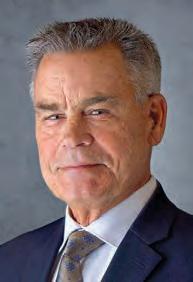

We get one life – one beautiful life to make our own.
For many of us, there comes a time when we “wake up” to where we are in life and realize it’s not where we want to be.
Somewhere between childhood and the present, we lose touch with the magic of life and start to feel disconnected from our true selves. We find ourselves stuck in patterns and habits that are no longer serving us, and our quality of life feels flat.
As a coach, I teach people how to reconnect with joy and create a new perspective that allows them to wake up every day feeling peaceful, purposeful and present, so they’re not always waiting for the next weekend, vacation or retirement to “feel happy.” We are capable of thriving, even in the presence of stress, and coaching can help us learn how to do this.
AA life coach is a skilled professional who empowers people to live up to their highest potential by providing guidance, support and accountability using a structured process.
Typically, clients meet with their coach once a week for 50-60 minutes either virtually or in person over a set period of time, usually 3-6 months.
The coaching process is designed to be time-limited and goal-directed and helps people get unstuck rapidly and move forward in their lives. The work is highly focused and is informed by:
• The science of habit change – the ability of the brain to rewire itself
• Mindfulness – finding peace in the present moment and building a resilient mindset
• Positive psychology – a strengthsbased approach to human happiness
• Coaches are skilled and compassionate communicators who are trained to elicit powerful insights
in their clients which spurs them to take action. They are skilled at supporting people to identify what’s holding them back and give them the tools to transform their obstacles and move forward.
AHiring an experienced life coach is an investment, but it’s important to recognize that you’re not paying for an hourly service. A skilled coach will provide you with a life-changing experience and a lasting end result. Professional coaching offers a structured, science-based, goal-oriented system that will give you the results you’re looking for in the shortest amount of time possible, tailored precisely to your specific needs and circumstances.
AThere are many reasons people seek coaching. Some of them include:
• You’re feeling stuck or lost and need help finding a path forward.
• You have tried to make changes on your own but have not been successful.
• You recognize that the path you’re on leads to an unacceptable outcome. Examples include:
• Lack of self-care leading to poor health.
• Poor stress management diminishing your joy and quality of life.
• Self-doubt preventing you from realizing your goals and dreams. Coaching can help you develop an empowered mindset that supports you in your pursuit of becoming the best version of yourself in less time than you think.
Take the time to do your research, ask for recommendations from others and read testimonials from potential coaches’ past clients. Nearly all coaches will offer a low or no-cost consultation. This is the perfect opportunity to explore whether you and the coach are a good fit for one another. This initial conversation – sometimes called a discovery session – can be extremely beneficial for determining if you and the coach are a good match, but will also help you gain clarity and insight about your true desires, what’s keeping you stuck and what steps to take next.
APeople who have the most success reaching their goals with a life coach are those who have a burning desire to change how they are experiencing life and are ready and willing to do the work required –with the support, encouragement and accountability of a coach who believes in them and their potential to thrive.
It’s important to note that life coaching may not be the best approach for everyone, and in some cases, therapy is a more appropriate choice, such as for those seeking treatment for mental health conditions. A consultation can help sort this out for you. ■
Surely, you may have other questions about life coaching and what benefits it would provide. Feel free to reach out to me at leah.corcoran.coaching@gmail.com. I’m here to offer my expertise so you can be informed when considering your next steps.

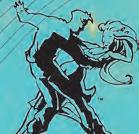



It’s Friday morning, a little past 8. Rick Jaskowiak reaches for his jacket and heads for the door.
That’s when Banjo knows it’s time to go to work. Not to a tedious, watch-the-clock kind of job, but to a place where he gives and receives
joy… and lots of treats and belly rubs.

“Banjo is the most popular living thing in this hospital,” says Kari Knudson, who coordinates the dog therapy program at Sanford Bemidji Medical Center.
It’s hard to argue that as you watch
the gentle 85-pound charmer on his weekly rounds at Sanford. Banjo and Rick have been working at the hospital since August 2017, shortly after completing the Paul Bunyan Dog Training Association program for therapy dogs.
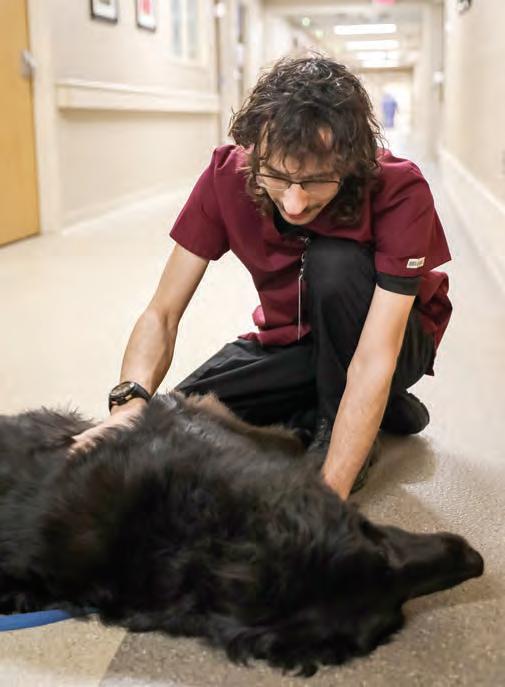






“He's world famous for - Rick Jaskowiakbelly rubs.”
Banjo’s anticipation grows as Rick’s vehicle turns onto Anne Street near the hospital. It grows even more when they pull into the parking lot and he gets his official badge on.
“That’s when he really knows he’s going to work,” Rick said.
They reach the lobby at the east entrance and the loving begins. It seems everyone is happy to greet Banjo. The ritual continues as Rick and Banjo make their way from floor to floor, department to department, over the next three to four hours.
“He’s world famous for belly rubs,” said Rick, a retired forester and mapping specialist. “It’s
not five minutes we’re in the hospital and he’s on the floor, right in the lobby. It makes no difference where he’s at. He’ll slide down into a belly rub. He suckers just about everybody down there.”
He adds that if no one goes down to pet Banjo, he’ll come right back up and try again.
“He lays on his side first,” he explains. “People will get up and start leaving, then he’ll roll all the way over so his belly is actually sticking straight up. ‘You can’t quite leave yet, you’re not done.’ And I would say 90% of the people come back and pet him some more.”
“For over 65 years our mission has been to provide our customers with a shopping, buying, service and ownership experience that satisfies your needs and exceeds your expectations in a comfortable supportive environment.”



Rick and his wife, Leanne, became Banjo’s owners on Dec. 2, 2016, when he was a little over a year old. They were looking for a new pet after their black lab had died earlier in the year. After posting an ad online seeking another black lab, Rick received a call asking if he would consider adopting a mixed-breed dog instead.
That call came from a farm family with three children, three dogs, some chickens and two full-time jobs.
“So they decided to give the newest dog away,” Rick said. “We said, ‘Sure, we’ll meet with him.’”
It was in the parking lot of a local veterinary clinic where that meeting took place. Rick and Leanne fell in love with the furry fellow and agreed to take him. But first, the dog had an appointment to be neutered.

“So he went into the vet’s office and came out fixed,” Rick said. “He was groggy. We took him home and the poor guy was sore for days, and I’m sure he was wondering what happened. He left this busy house with three kids, and now he wakes up with these two old people.”
Now it was time to find a new name for the new family member. His previous name – “Guilty” – was not going to cut it. So Rick and Leanne turned to the internet for help.
“We found a site that asks a bunch of questions about your family and your living situation, all kinds of information about you,” Rick said. “Then they pump out a list of 50 names that might suit that situation. We went through all 50 and threw out all but seven. From there we finally landed on ‘Banjo.’ That’ll work. Dogs respond really easily to a change of names. Just give them some treats and they’ll follow you anywhere.”
Rick was told the dog was one-half collie, one-fourth Labrador retriever and onefourth poodle.
“I didn’t quite believe the poodle part,” Rick said, “so I had a DNA test done, and that’s exactly what he is. I call him a Collabradoodle.”


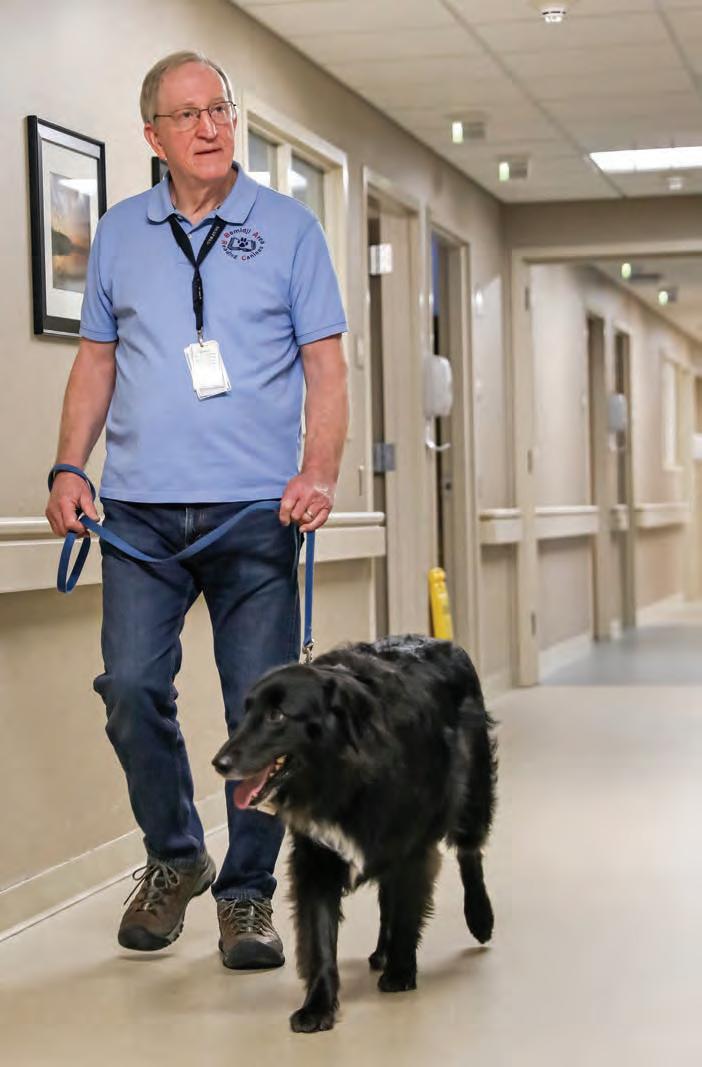

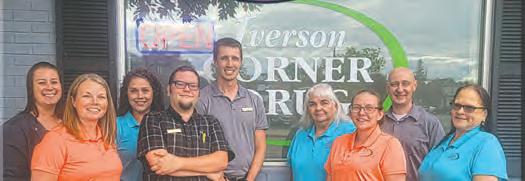

After a couple of months of acclimation, Rick decided it was time for professional training.
“We considered therapy training right away,” he said. “Banjo was just a mellow guy right from the start. It was always in the back of my mind to do this therapy stuff. But our other dog wasn’t suited for it.”

First came a pair of obedience classes, followed by a therapy class and field trials. Dogs are observed to see how they respond to rough handling, people grabbing their paws and ears, how they do with sliding glass doors, elevators, food carts, walkers and other equipment. Banjo handled it all with ease.
“It was clear right away he had the right temperament,” Rick

recalled. “Even in obedience school, you could tell. He graduated valedictorian. For real.”
They started therapy work by visiting nursing homes and assisted living facilities. Then Rick inquired about visiting the hospital floors, and Kari agreed to give it a try. She said therapy dogs were previously only used in the acute rehab unit.
Rick and Banjo were a hit with staff and patients. Those first visits were shorter, and Rick was learning right along with his dog.
“I don’t knock on (patients’) doors,” he said. “If the doctor is there I don’t go in. I kind of peek in the door and see if a patient is either looking out or smiling at me, or you can tell by their eyes they want a visit. I’ll ask them if it’s OK if Banjo comes in.”

“It was clear right away he had the right temperament, even in obedience school, you could tell. He graduated valedictorian.

- Rick Jaskowiak For real.”
“Right from the very beginning it was a good fit,” Kari said. “Banjo and Rick are just a calming presence. We often forget about Rick; he’s ‘that guy with Banjo.’
Without Rick, Banjo would not be the therapy dog that he is. I can say that about all of our therapy dogs. They’re a real team. The dog is only as good as the handler.”
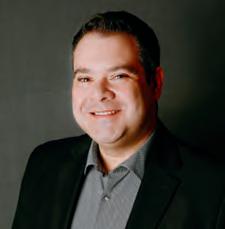


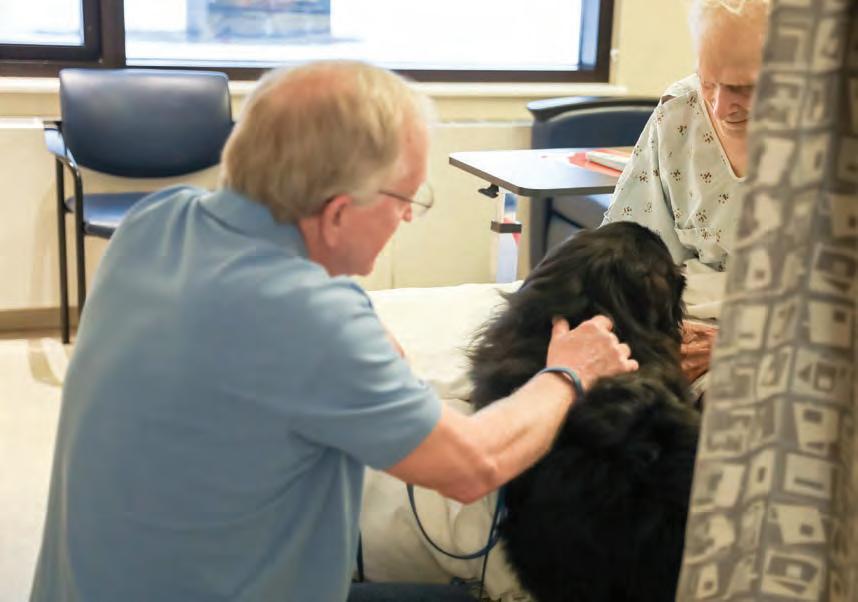
While Banjo is content to get belly rubs and treats, the impact he has on hospital patients can be overwhelming.
“He seems to pick up on people’s distress,” Rick said. “With some people, he’ll just go get petted. Other people, he’ll sit by them and lean on them. Or if we visit a patient in bed, I think he kind of knows what side they’re hurting on or not. He picks up on that. He also picks up on people who don’t like dogs.”
Rick recalls three examples of memorable visits.
Once they were in a room with a young boy who had a neurological issue and couldn’t control his arms or his speech. The boy was in a chair, flailing his arms and slapping at the dog.
“Banjo just sat there taking it,” Rick said. “Somebody was paying attention to him, so he’s all good. Then the boy let out a big laugh, and several of the nurses stuck their heads around the corner and said that was the first sound they had ever heard him make. So that was kind of cool.”
Banjo’s longest visit was with a woman in the waiting area at Sanford’s Joe Lueken Cancer Center where her husband was undergoing cancer treatment.
“She talked for about an hour and 15 minutes about her husband, where they’ve lived, what they’ve done,” Rick said. “Banjo was sitting on the floor leaning on her the whole time. He never left. He sensed that she was distressed and grieving, so he just sat there. There were also times that she didn’t talk at all; she just petted Banjo.”
Another time they were visiting a teenage girl who was in a hospital bed with her mother sitting beside her. The girl asked if Banjo could come into bed with her.
“I asked the mom if it was OK and I asked her if she was hurting anywhere,” Rick said. “She wanted him. So he jumped up there and snuggled up under her arm and pretty much laid motionless for 15 to 20 minutes.”
When all of the visits are complete, all of the belly rubs have been given, all of the treats have been consumed, it’s time to head home for
some well-deserved rest. That goes for both handler and therapy dog.

“You can tell Banjo is wiped
out,” Rick said. “We’re both shot after 3 to 4 hours.”
At least until next Friday rolls around.







The Paul Bunyan Dog Training Association offers therapy dog training twice a year, in the spring and fall. Upon successful completion, owners can move on to reading education assistance dog training to qualify as a Bemidji Area Reading Canine.
To learn more about the programs, contact Tracy Parthun at (218) 766-4935. Tracy has coordinated the training programs since 2001.
“It’s really fun to see the therapy dogs at work and just to experience it myself as I go around and visit, too,” Tracy said. “It brings so much joy to the patients and clients we’re visiting, and the staff, too. It’s a 50-50 thing.” ■
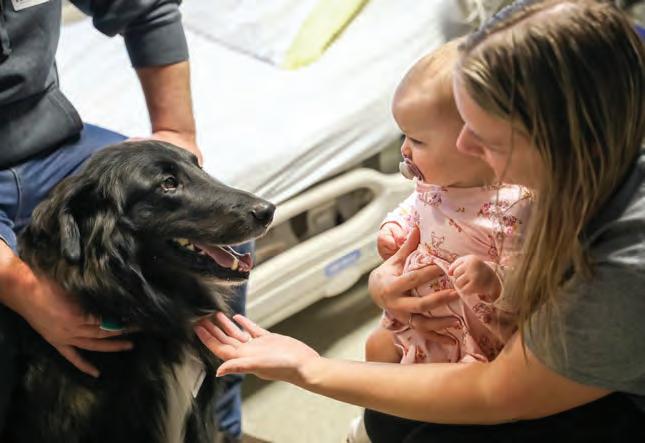








Recipe on page 24



For this issue of inBemidji, Larisa has cooked up some protein-packed meals that can be completed in as little as 30 minutes. These delicious dishes are perfect for those always on the go but in need of a filling dinner and will provide the satisfaction of cooking a full meal with little time commitment.
APPROX. 465 CALORIES / 46G PROTEIN / 48G CARBS / 10G FAT
Numbers may vary slightly depending on the brands and ingredients you use.
Ingredients:
1 box elbow macaroni
3 chicken breasts, cubed
Olive oil
Salt Pepper
Paprika
Garlic powder
Chili powder Milk
¼ cup light cream cheese
⅓ cup mozzarella
¼ cup chipotle peppers in adobo sauce
Chipotle cheese sauce:
1 cup milk
⅓ cup pasta water
¼ cup light cream cheese
⅓ cup mozzarella
¼ cup chipotle peppers, finely chopped
Directions:
Cook pasta per package directions. Season diced chicken with 2 teaspoons olive oil, 1 teaspoon salt, pepper, paprika, garlic powder and chili powder. Cook chicken in a large skillet over medium/high heat until cooked through.
Remove chicken from skillet and lower heat to low and cook the sauce until it thickens. Do not burn. Add the pasta and chicken to the thickened sauce and mix well.on the brands and ingredients you use.



APPROX. 496 CALORIES / 44.5G PROTEIN / 46G CARBS / 15.5G FAT
Numbers may vary slightly depending on the brands and ingredients you use.
Ingredients:
1 box rotini pasta
Olive oil
1 small onion
1 bell pepper (color of your choice)
1 cup mushrooms, sliced
1 tablespoon minced garlic
1-pound lean ground beef
¼ cup light cream cheese
⅓ cup fat-free plain Greek yogurt
⅓ cup mozzarella cheese
Salt and pepper
Paprika
Chili powder




Directions:
Cook pasta per package directions. In a large skillet over medium/high heat, add 1 teaspoon olive oil and sauté 1 small, chopped onion, 1 chopped green or colored bell pepper, 1 cup sliced mushrooms and 1 tablespoon minced garlic until almost cooked. Shift the veggies to one side of the skillet and add the ground beef. Season with 1 teaspoon salt, pepper, paprika and chili powder. Cook together until meat is browned.
Lower the heat to low and add ¼ cup light cream cheese, ⅓ cup fat-free Greek plain yogurt, ⅓ cup light mozzarella cheese, ½ cup pasta water and mix until all combined. Add the cooked pasta and mix well.








Ingredients:
3 chicken breasts, cubed
½ teaspoon black pepper
1 teaspoon garlic powder
1 teaspoon onion powder
Light soy sauce
1 12-ounce bag frozen mixed vegetables
3 eggs
4 green onions
3 cups cooked white rice
Sesame oil
Olive oil
Cornstarch
Sauce:
½ cup honey
1½ tablespoons light soy sauce
⅛ cup ketchup
3 teaspoons rice wine vinegar
3 diced garlic cloves
1 teaspoon cornstarch mixed with ½ cup cold water
Directions:
Prepare rice per package directions. Season diced chicken with ½ teaspoon black pepper, 1 teaspoon garlic powder, 1 teaspoon onion powder and 2 tablespoons light soy sauce. Let marinate for 15 minutes. In a wok or large skillet over medium/high heat, add 1 tablespoon olive oil, frozen mixed vegetables and 3 eggs. Scramble the eggs with the mixed vegetables.
Add cooked rice, 3 green onions, 1 ½ teaspoons sesame oil, 3 tablespoons light soy sauce and cook until some of the rice gets crispy or to your desired consistency.
In a large skillet, cook the marinated chicken over medium/high heat. In a medium bowl, prepare the sauce and add to the cooked chicken, simmering until thickened. Serve the chicken over the fried rice and top with remaining chopped green onion.


APPROX. 502 CALORIES
53G PROTEIN / 38G CARBS / 15G FAT Numbers may vary slightly depending on the brands and ingredients you use.
3 chicken breasts, cubed
3-4 garlic cloves, minced
2 tablespoons onion powder
2 tablespoons Italian seasoning
1 teaspoon chili flakes
2 teaspoons paprika
1 teaspoon salt
Olive oil
6 uncooked potatoes, cubed 1 teaspoon salt, garlic powder, Italian seasoning, chili flakes and paprika
1 tablespoon olive oil
Add the seasonings and olive oil to the cubed uncooked potatoes and bake on a baking sheet for 20-23 mins at 400 degrees.

½ cup milk
4 ounces light cream cheese
½ cup grated parmesan
Add salt, garlic and Italian seasoning to taste
½ cup shredded mozzarella
Directions:
Season diced chicken with 1 teaspoon salt, garlic powder, Italian seasoning, chili flakes and paprika. Add 1 tablespoon olive oil to a large skillet and cook the chicken on medium/ high heat for 5-6 minutes.
Lower the heat to medium/low before adding the ingredients to prepare the sauce. Mix the cream cheese until melted and becomes creamy. Add the cooked potatoes and mix until combined. Add the cheese and cover for 4-5 minutes until melted.


by Jennifer Koski special to inBemidji
AGE: 61
OCCUPATION: Executive director at Headwaters Music and Arts
WHERE WE FOUND HER: Open mic at Brigid’s Pub
Editor’s Note: Writer Jennifer Koski believes everyone has a story to tell — from the person in line behind you at the coffee shop to the person who delivers your mail. After 12 years of proving this theory with her award-winning “Random Rochesterite” magazine column in Rochester, Minn., now a Bemidji transplant, Koski is bringing these person-on-the-street interviews to inBemidji.


+ Are you originally from Bemidji? No, I’m not. I am from the Hibbing area. But depending on where you’re from, I may say I grew up “northeast of Bemidji,” or the “Iron Range,” or the “Greenway school district” or “north of Nashwauk” or then, finally, Cloverdale.
+ What brought you to Bemidji? My husband and three kids and I were living in Grand Rapids, and I had finished a degree at Itasca Community College and then was transferring to Bemidji State. Faced with the decision of “Do I drive back and forth or do we relocate to Bemidji?” we made that decision to simply move here, which has been a good decision that I have not regretted. That was 33 years ago.
+ You were at Brigid’s to watch the open mic show when we met, but have you ever performed? When I started my job at Headwaters Music and Arts, I took up the ukulele and took part in a recital. My teacher was next to me, but still, it was super hard to do. It was totally out of my comfort zone, but I felt it was something I should do with my new job — to have some basic understanding of playing an instrument. And it’s fun to be able to say, “Yes, I play the ukulele.” I now have a concert ukulele and a baritone ukulele, so I can say I play two instruments!
+ Best part of your job? It’s when I unlock my office door each day and all those possibilities are ahead of me as I enter that sunny office. There are those things I need to do and there are also those unexpected possibilities, depending on conversations I have, too. That creative aspect of my job — that you might not think of as my job but is inherent in it — feeds me. It’s really rewarding.
+ What do you want people to know about Headwaters Music and Arts? People wander in off the street and say, “I’ve been walking by for years — what is it that you do here?” There are so
many different programs that happen as an independent nonprofit. Everything focuses on music, art or community — and usually intersections between the three.
Our mission is varied with all the different music events, lessons, art classes, the pottery program and volunteer-led initiatives like the Open Mic and CoffeeHouse and First City Singers. We have financial assistance for all of our youth activities, so our goal to be accessible to Bemidji and the larger community underlies everything we do.
+ How did you meet your husband? In high school. I was almost 16 when we started dating, and we were married in 1979. He died almost 10 years ago.
+ I’m so sorry. How did he pass away? From complications following surgeries. He had surgery following a ruptured appendix, and six weeks after that all started, when he’d been home for a couple of weeks, he had some sort of aneurysm and died unexpectedly amidst recovering.
+ What did you learn about yourself after that deep loss? I think it was realizing that I can do hard things. Just the difficulty of “what does it mean to live alone?” What does it mean to not be part of a couple? To say “I” instead of “we.” There are some things that are yours to carry — the grief and sorrow and loss and recovery. People can help you, but they’re yours to bear. That’s what I recognized then and still see as part of life.
sisters; they’re an important part of my life. I love being with my kids and grandkids. And I am super invested in the Headwaters Unitarian Universalist Fellowship.
+ Do your sisters live nearby? They live in the state. My sister, Laura, and her husband bought the house we all grew up in. So I have the joy of literally going home and tromping through those same woods that I tromped through as a kid. Something I value is that my own kids and now my three grandkids know that place and go back there and feel their grandparents. There’s joy in having that family home to go to.
+ What might I be surprised to learn about you? It depends on the level you want to know and that I want to share! So, you name it.
+ OK, tell me about something that might seem out of character for you. You might not know that I worked


for a Girl Scout council for 21 years. As part of that, I was trained to facilitate a high ropes course. I was in my 40s and they were impressed that I was doing that! I stretched myself at times. Oh, and I’m a wedding officiant on the side. I do weddings and funerals. As somebody who’s pretty reserved, that ability to speak in public is part of what I am able to do. It’s another creative outlet.
+ Biggest adventure? Going to Glacier National Park and doing a couple of trails that have been on my bucket list for a long time. And the adventure of a grizzly following a group of us along the trail! It was a narrow path with a cliff on one side and a drop-off on the other, and the grizzly was ahead of us so they were backing people up — “Keep moving! Keep moving! There’s a bear!” Some of the people in our group had their bear spray ready, but eventually, the bear meandered up the mountain.
+ Five things you love? I have 10! I love playing the ukulele. I love gardening and working in my yard. I love reading. I love my job. I love camping. I love traveling — the whole process, the packing, the road trip, the experience of being in an entirely new place. And I love coming home — I love being home on my front step in the morning with a cup of coffee. I love spending time with my


+ Scariest moment? Or did we just cover that? The “scary” things that I’ve experienced — in retrospect, they were difficult and super hard, but I think part of me wouldn’t describe them as “scary.” When I face those difficult situations, being afraid isn’t part of the equation. It’s doing what you need to do at the moment.
I think of family members who have gone through surgeries, who have come close to dying or did die, whether it was my husband or my son, Luke. Luke experienced super serious health concerns with multiple surgeries and he did almost die a number of times, so it’s been a pretty rough couple of years. And even though it happened to him, it’s part of my experience. There’ve been lots of difficult things. But scary? Scary is playing a ukulele in front of a recital or encountering that bear.
+ You are really proving my point that everybody you meet has stories to tell. So many of these things fit my long-time, working definition of adventure — which is when things go horribly wrong and you live to tell about it. There’s adventure in virtually anything we might’ve talked about so far. And then there are those sad times when somebody doesn’t get to live to tell about it. But I’m still alive, so I still get to tell about it.
“BUT
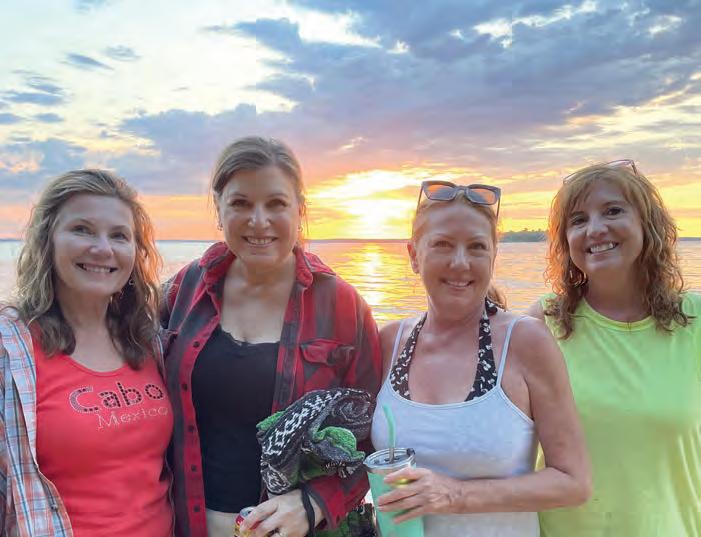

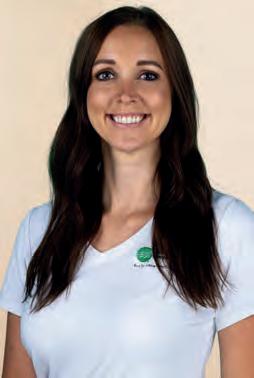






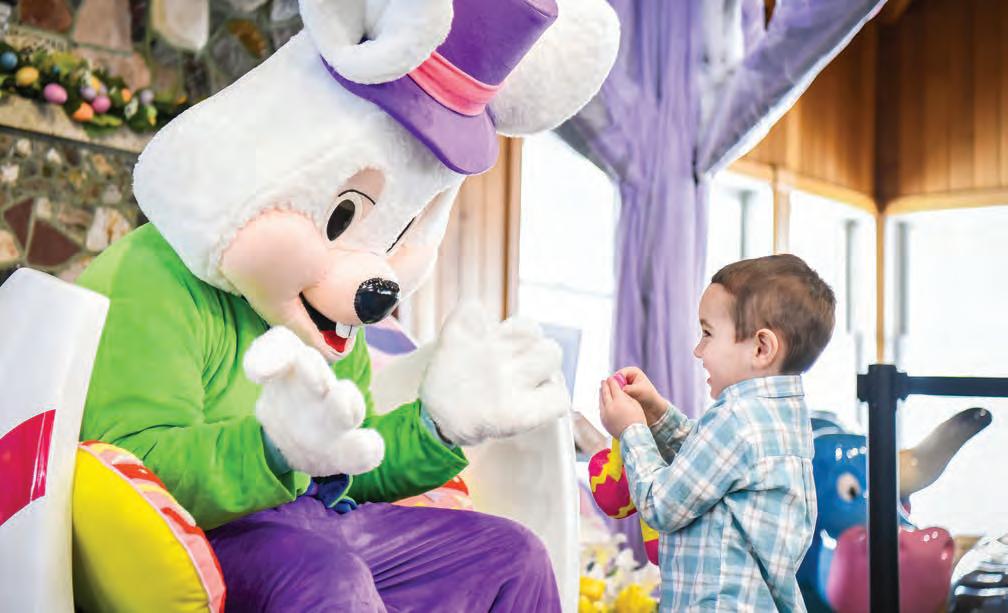
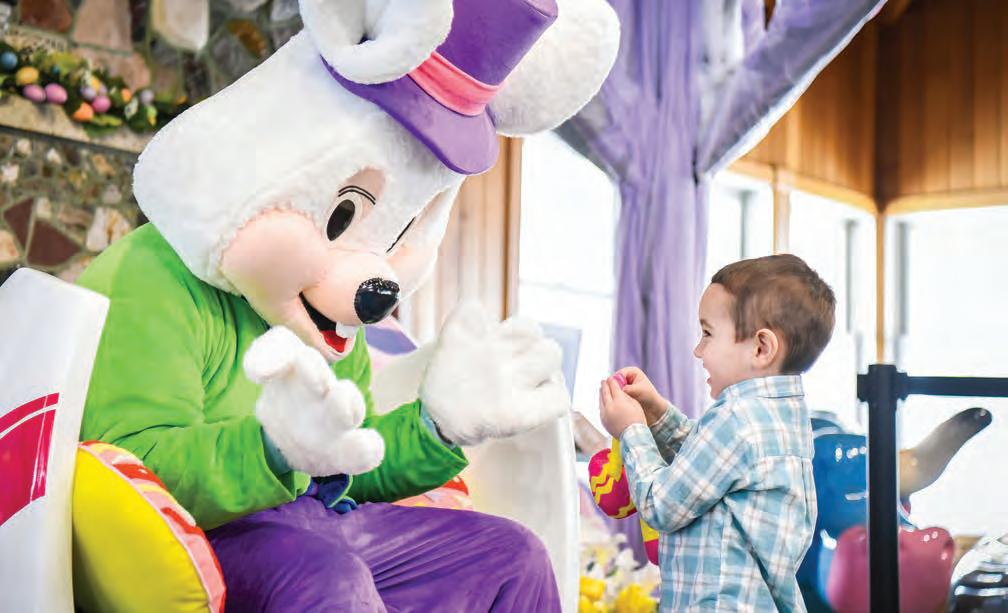
Connectin
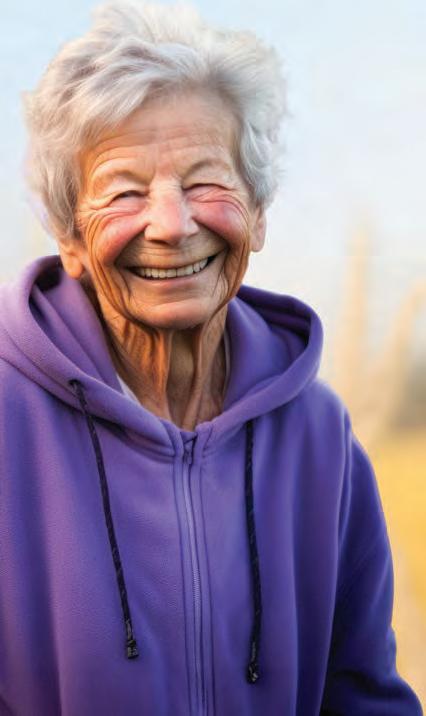
1-800-366-2906 oronlineat primewest.org
TTYNUMBER: 1-800-627-3529 or711
HOURSOF
OPERATION:
October1–March31, 7daysaweek, 8a.m.–8p.m. April1–September 30,Monday–Friday, 8a.m.–8p.m.
H2416_PW_01-24_1003_M
CMS_Accepted_02/12/2024
DHS_Approved_02/07/2024


ExperienceaddedcarewithPrimeWestHealth! MemberseligibleforbothMedicaidandMedicarenot onlyreceiveallthetraditionalMedicarebenefitsbut mayalsoenjoythefollowingextrabenefitsandmore:
$


DENTAL: Crowns,dentures,electric toothbrush
OVER-THE-COUNTER: $60permonth forOTCitems
FOOD: $185permonthforhealthyfood optionsformemberswithaqualifying chronichealthcondition
VISION: $300forprogressivelenses;upto $100peryearforadditionallenscoatings

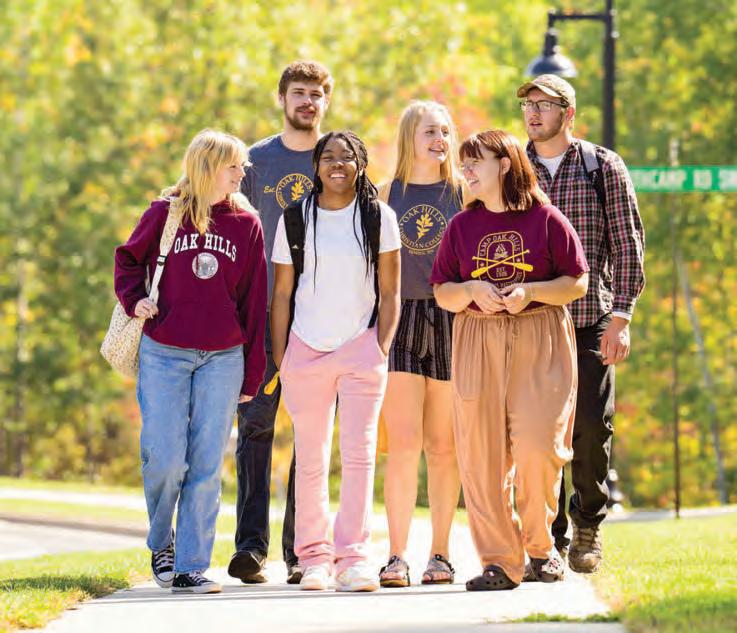


• Mail, office and school paper
• Magazines and catalogs
• Newspaper and inserts
• Phonebooks
Boxes
• Cardboard
• Cereal and cracker boxes
• Shoe boxes, gift boxes, electronics boxes

Glass
•

• Empty Water, soda and juice bottles
• Milk bottles
• Ketchup and condiment bottles
• Dishwashing and detergent bottles
• Shampoo, soap, and lotion bottles
• Yogurt, pudding and fruit cups
• Margarine, cottage cheese and other containers
•
•